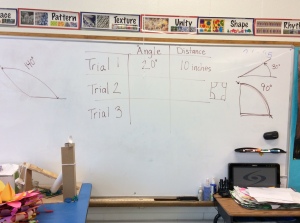When I first began researching ideas and resources to use in the development of this class, it was suggested to me that I reach out to Rose Garritano. Ms. Garritano works at UVM and leads a 4-H club extension. 4-H is an after school program that takes place in communities across the country. The goal of the program is to promote positive motivation, community building, and community interaction–all through the lens of science and STEM-based projects. Ms. Garritano graciously loaned me the materials to lead a five-week lesson on WTDs (transportation devices) with Mr. Brown’s 4th grade class.
We began the lesson by setting the scene: a natural disaster occurred on a remote island. All travel to this island nation was prohibited due to the devastation that occurred. The only way to provide food and supplies to the communities on the island was via rockets. Students had to work in groups of two to design, build, and test their rockets. They then had to design a way to carry “food” (raisins) on their rocket.
In the culminating activity, I asked students to keep data on the distance each rocket could travel and the angle at which each rocket was launched.
After the fourth graders recorded three rounds of data, visiting high school students from Big Picture in South Burlington set up a target (the island). Using the data they had collected, the fourth graders aimed their rockets!
This lesson was a perfect real world example of how engineering, math, science, and technology build on each other to support problem solving. The kids were engaged and worked well together. No one hit the target, but many were close. If given more time to keep testing their rockets, I’m sure more than one group would be successful.
